Iran has all four seasons and a varied climate. This feature has spawned biodiversity across the country. More than half of the country is covered by desert and semi-desert areas.
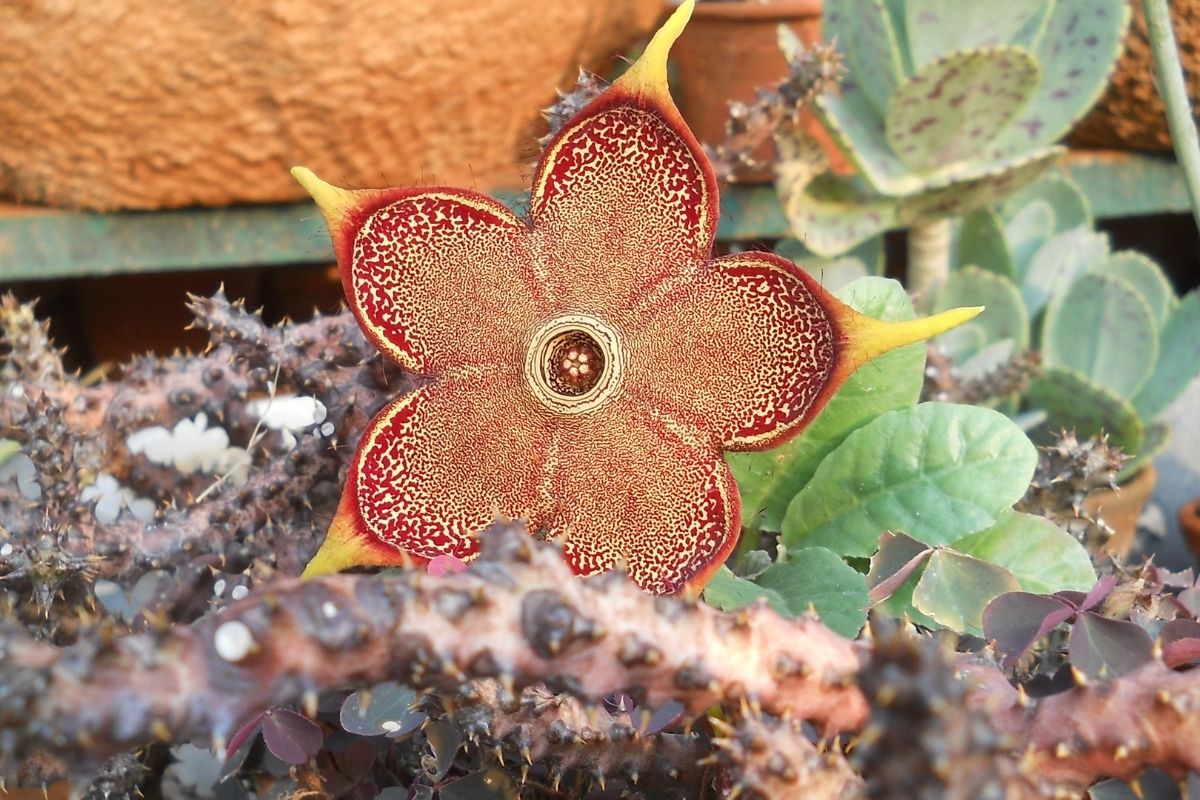
A third of Iran is mountainous, and a small portion of it (including the southern Caspian and Khuzestan plains) is made up of fertile plains. From the north to the south of this country, we gradually encounter different climate zones.
Iran has one of the most arid and semi-arid climates in terms of rainfall. In different parts of the country and during different seasons, the annual rainfall varies.
Many tourists visit Iran every year to see the vegetation, Persian flowers, and gardens. You may be aware that Iran is home to some of the most beautiful and oldest gardens in the world.
The pure and rare vegetation of Iran is one of the primary reasons.
Flower Festivals In Iran
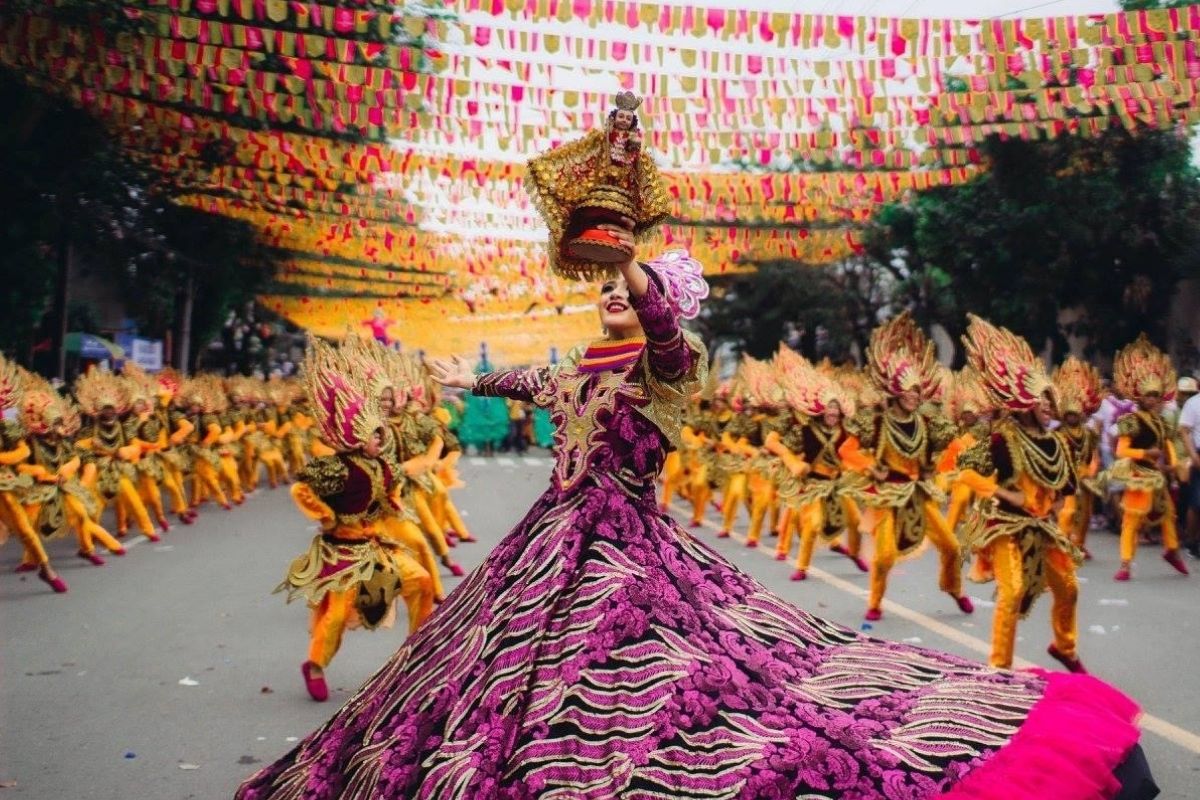
The Tulip Flower Festival, which is held every spring in Chamran Park in Alborz Province, is one of several flower and plant festivals. Due to its mild climate, Karaj is one of Iran’s most important flower and plant growing regions.
The Laleh (tulip) Garden Carpet is one of the festival’s most attractive and spectacular features. Every year, it attracts a large number of tourists.
It’s interesting to know that this flower carpet is the largest in the Middle East. We want to make you more familiar with Iranianflowers in this article.
Persian Flowers
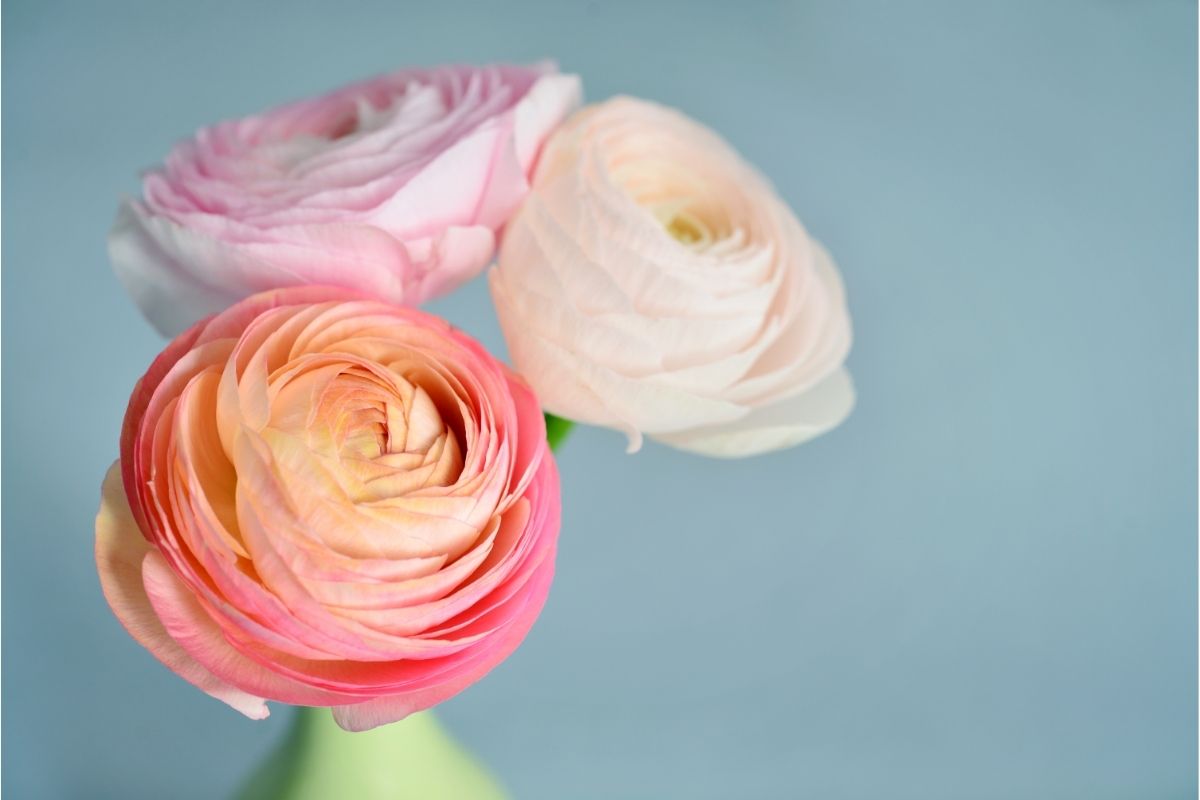
Some flowers are only found in Iran, or they were first grown here before being exported to other countries. Because of their unique geographical location and topography, Iranian indigenous flowers are extremely diverse and attractive.
Because of its wide climatic range and unique topography, Iran is very rich in vegetation. Every part of the country has its own set of plants and flowers.
Saline plants grow in the deserts, while wildflowers bloom in the foothills. In Iran, more than 2500 native plant species have been identified to date.
Central Asia is the primary tulip habitat. Iran, Greece, Turkey, Afghanistan, Spain, Italy, and parts of western Syria have all seen this lovely flower.
The Mediterranean, Caspian Sea, Aral Sea, and Black Sea shores have also provided a suitable habitat for wild tulips. 19 tulip species are unique to Iran.
However, the Netherlands is now the world’s largest tulip producer and exporter. Tulips have a special place in the culture of Iran and Turkey.
such as Iran, Turkey, Afghanistan, the Netherlands, Hungary, and Belgium have their own national flowers.
1. Saffron Crocus Or Crocus Sativus
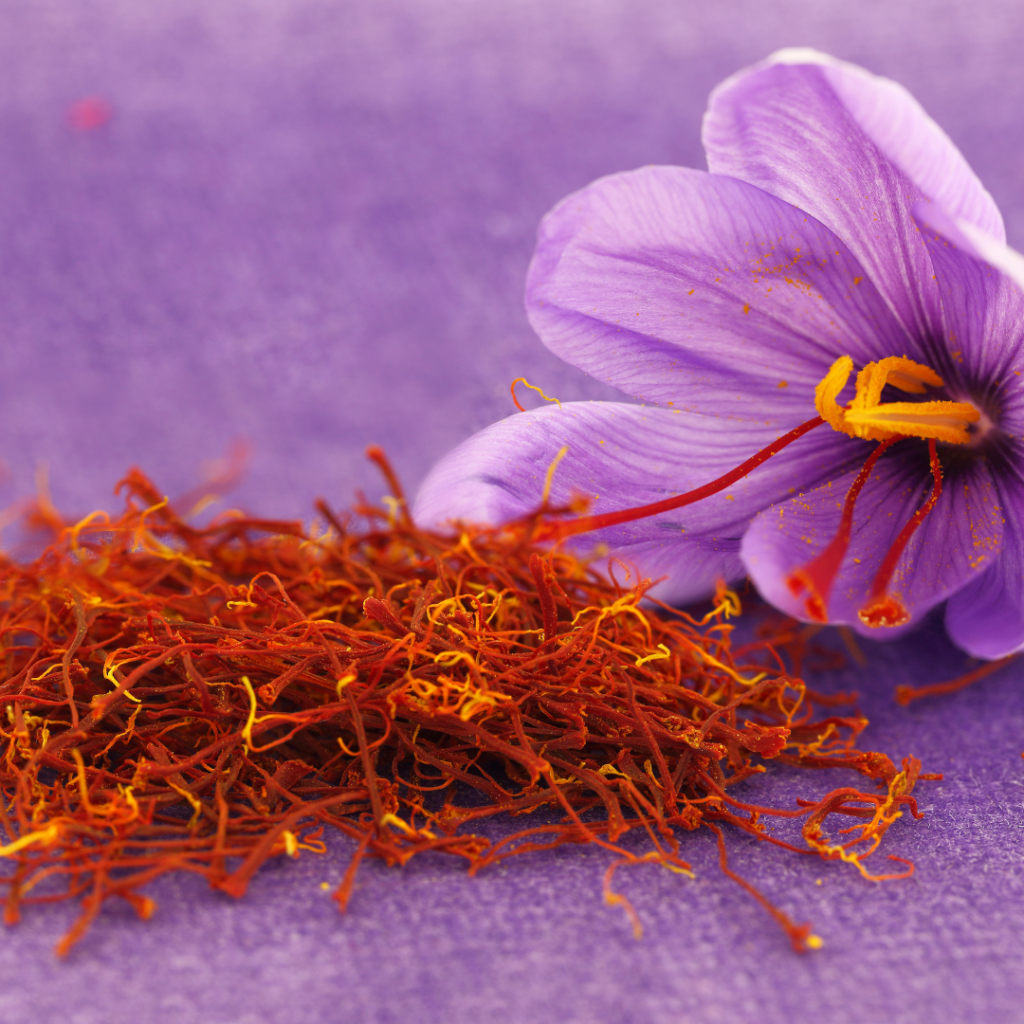
A rare Persian flower is extremely expensive.
The spice comes from a flower called Crocus Sativus, which is commonly known as the “saffron crocus.”
This edible flower is thought to have originated in Greece and was first grown there, but today the spice is mainly grown in Iran, Greece, Morocco, and India.
Saffron must be picked by hand in the mid-morning, and each flower only produces three threads (stigmas) of saffron per year, and it blooms for just one week; these are the reasons for its price.
This beautiful flower is subtle and fragrant, with a slightly sweet taste. It is used in food and has a very mysterious flavour.
Furthermore, it is useful for Antioxidants, Nervous system disorders, boosting mood, PMS symptoms, and weight loss.
2. Fritillaria Persica
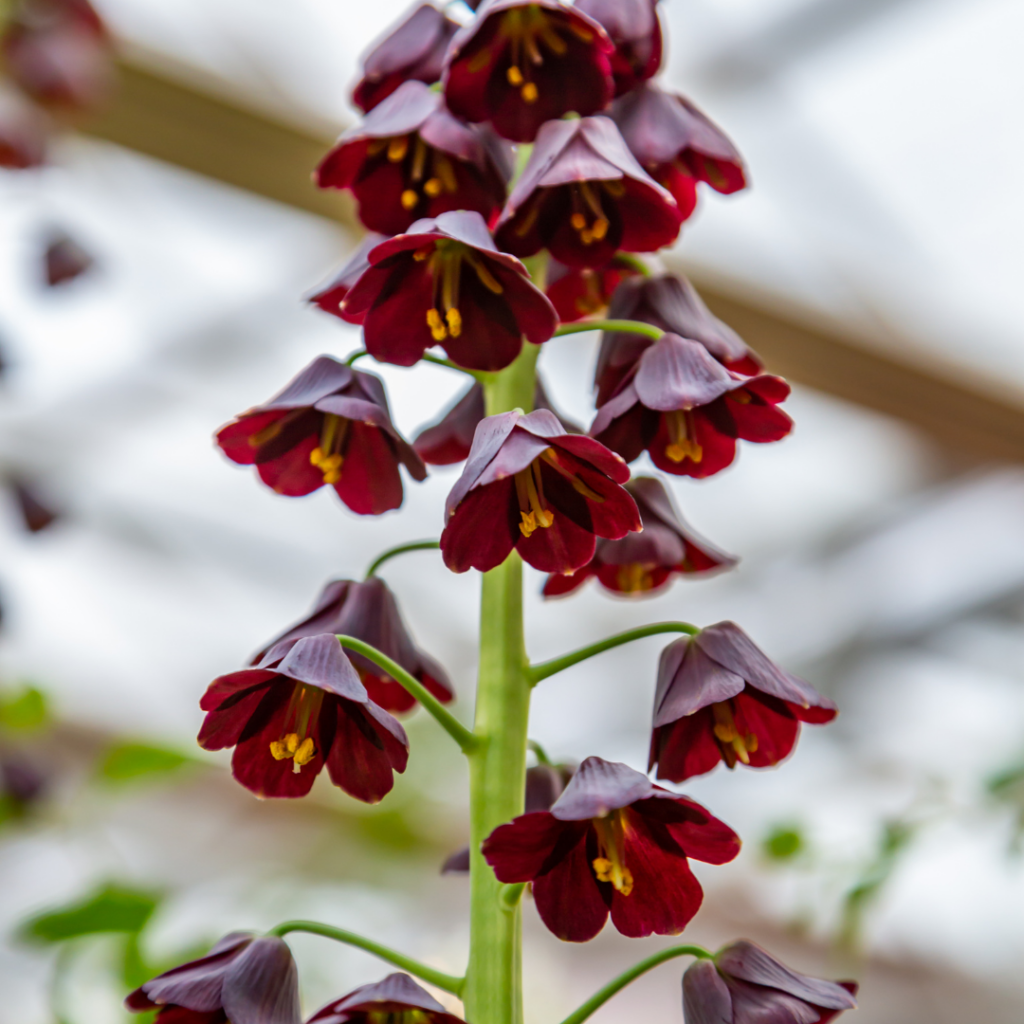
This unusual flower belongs to a class of lilies that grows downwards, unlike other flowers. Fritillaria Persica is one of the Persian flowers that Iranians regard as culturally significant.
The death of Siavash, the son of Kikavous, is the reason why Fritillaria Persica mourns (the downward shape). The Turanians are said to have killed Siavash at the hands of Fritillaria Persica.
According to these mythological tales, this flower fell after Siavash’s death and wept over the innocence of the Iranian son, with colourless sap dripping to the ground.
Persica has a very short life span, less than one month per year.
This mythical flower grows in the foothills of the Zagros Mountains, as well as the provinces of Chaharmahal and Bakhtiari, Isfaan, and Lorestan.
More than 60 species of this flower have been identified so far, 15 of which are grown in Iran. Iran is home to just four species of Iranian Fritillaria Persica, Kurdish Fritillaria PerSica, Turkish Fritillaria Persica, and Fritillaria Persica.
Because of the plant’s overflow of tears and nectar from inside to outside, this flower is also known as “Mary’s Tears.”
Fritillaria Persica is another example of a native Iranian plant that usually begins to grow in May (spring). This plant is one of the endangered species.
and sometimes yellow Fritillaria Persica grows in the cold regions of Kohgiluyeh and Boyer-Ahmed provinces.
3. Lilium Ledebourii
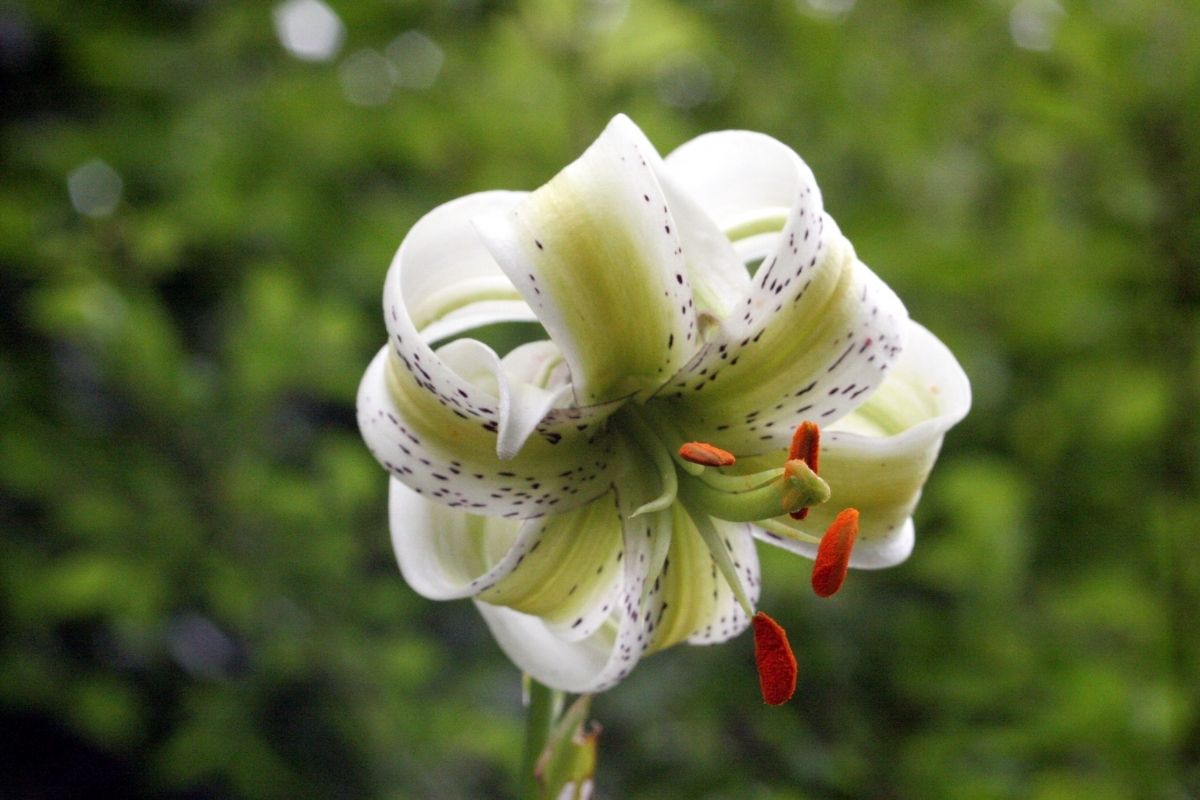
It is a rare Persian flower that grows in northern Iran’s Gilan, Mazandaran, Ardabil, and Azerbaijan provinces. Damash Village, Gilan, is its primary habitat.
This Persian flower has a height of 50 to 150 cm. The flowering season usually begins in June and lasts about two months. Lilium Ledebourii produces 4 to 10 flowers in the average season.
Within 7 cm of the main flower, the flowers usually bloom together. Many people believe that this type of lily shines at night, which is why it is called Chelcheragh in Farsi (“chandelier”).
Others have attributed its name to its resemblance to a chandelier. Only a few of this bizarre and endangered plant remain in Iran today.
As a result, they are protected by strict measures. In 1975, Lilium Ledebourii was included on the Iranian environmental monuments list.
4. Gulnar (Pomegranate Flower)
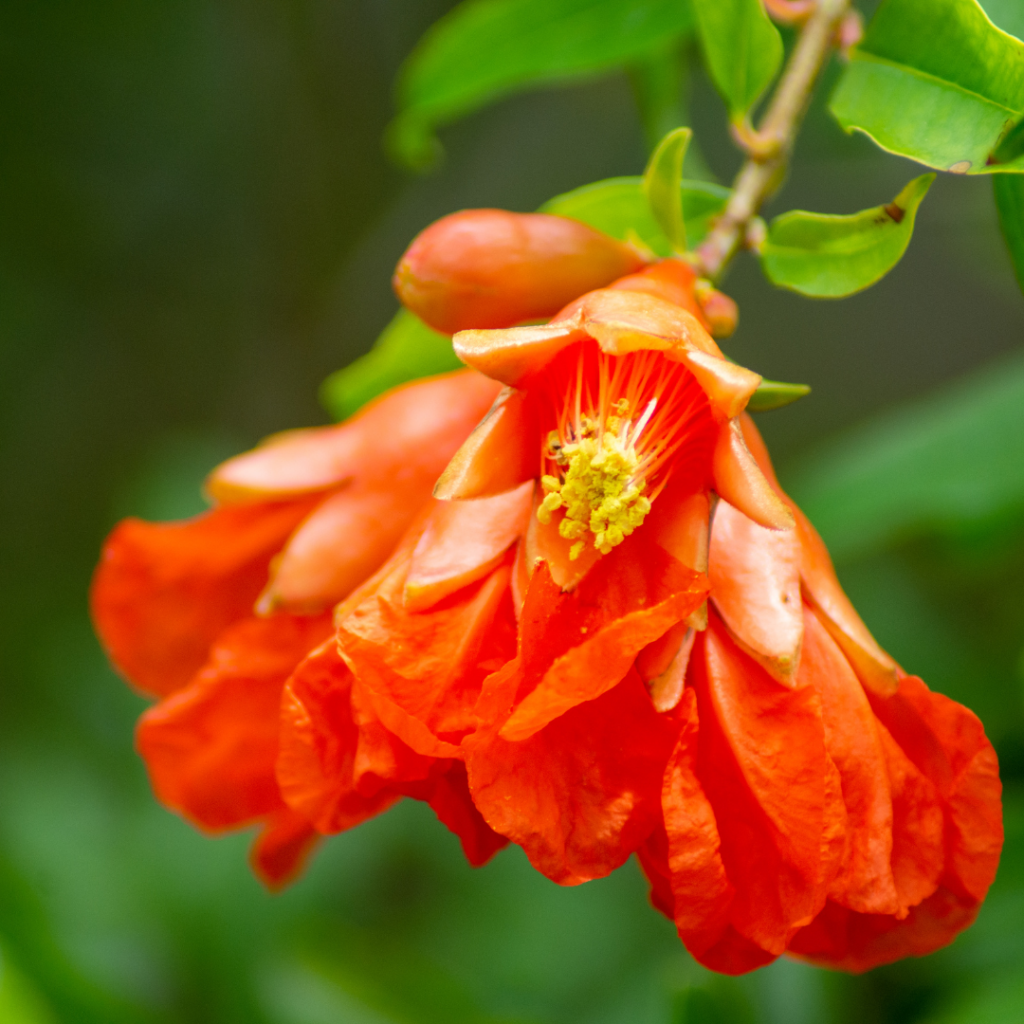
Gulnar is the name of the pomegranate tree’s flower. The flower’s popularity is primarily due to its medical uses (in traditional medicine).
Syphilis is treated with a Persian Gulnar decoction. The juice is used to treat jaundice, diarrhoea, and frequent nosebleeds. This flower’s dried and creamy flower buds are used to treat bronchitis.
Persian Gulnar is another name for the pomegranate tree, with the distinction that this tree is male and does not produce fruit. The male tree produces dark green leaves on the first days of spring.
The buds take a while to appear. These buds are similar to pomegranate blossoms. The buds open in June and produce bright red and vibrant flowers.
These flowers appear on the tree’s branches until the end of July and die with a unique beauty at the end.
5. Rosa Persica
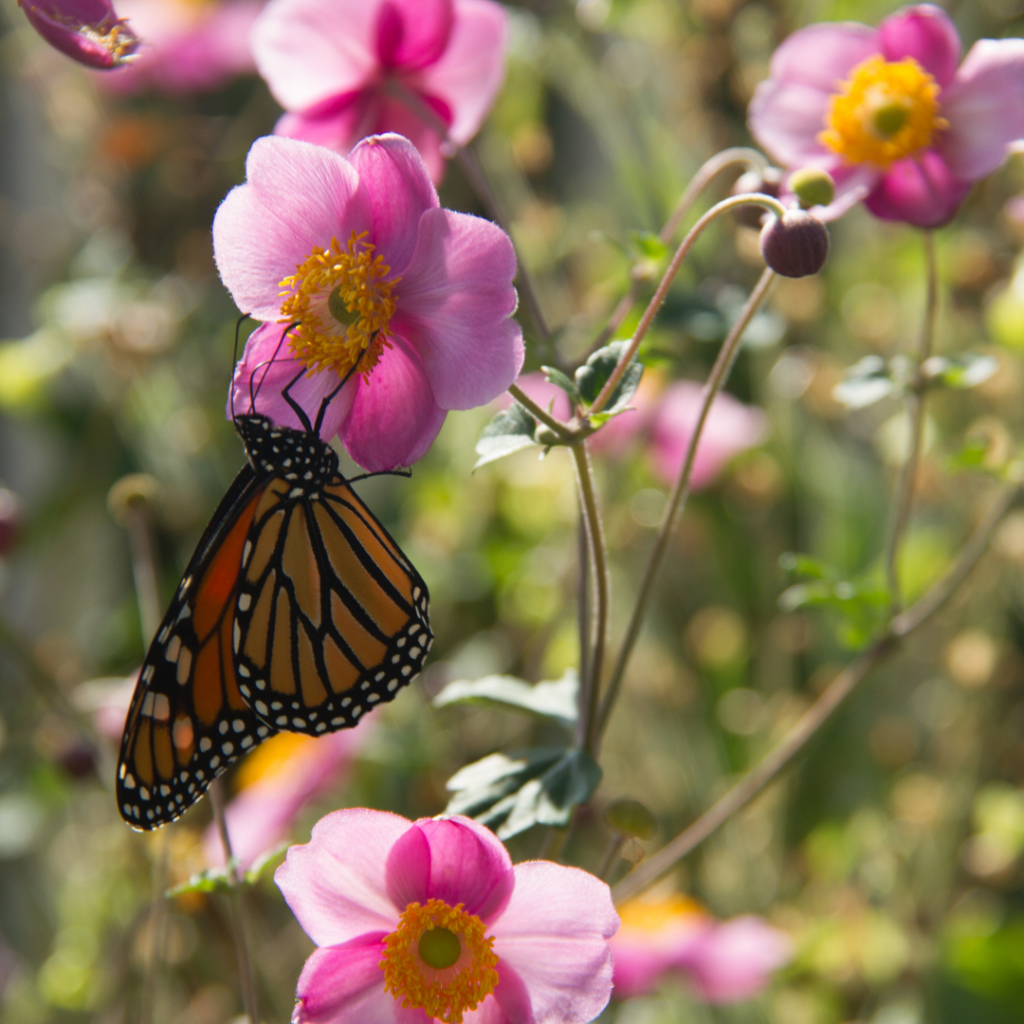
Another Persian flower, Rosa Persica, also known as the Persian rose or more commonly referred to as the Muhammadi Flower, occupies a significant place in Persian Culture.
In fact, it did not grow in any other region until about 350 years ago, except Iran. Rose was exported from Iran to Turkey, Syria, and Bulgaria during the Safavid era, along with special rose-picking machines.
More than 20,000 species of roses have been identified and named so far, and more varieties of this fragrant flower are still being discovered each year around the world.
6. Rosa Essential Oil
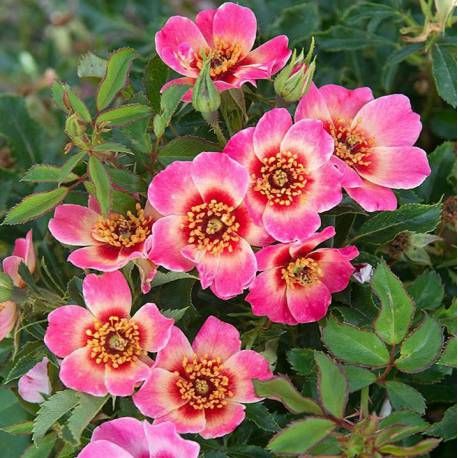
Rose essential oil is now widely used in the perfume industry as well as food products like tea and jam. That is why it has the most expensive essential oil in the world. In fact, each gram of rose essential oil is worth one gram of gold on the global market.
One of Iran’s native flowers, it has yellow and sometimes red fragrant blossoms. Rosa Persicare procreates naturally through pollination.
There is a red area between the yellow flowers that attract insects like bees, for this reason. Rosa Persica can grow to 50 to 60 cm in height, with flowers that measure around 3 cm in diameter.
The bases of this beautiful flower were sent to Luxembourg Park in Paris for propagation around 140 years ago. This prompted the plant’s reproduction in Europe.
The Netherlands now accounts for nearly all of the world’s rose trade.
RELATED: How to Use Neem Oil for Plants as an Organic Pesticide? Plus, Amazing Benefits!
7. Crocus Gilanicus

This flower is unique to the Gilan region, as its name implies. This flower is a member of the saffron family and looks very similar to ordinary saffron, with the exception that the petals are white. As it ages, it turns to a very pale purple.
8. Tulip
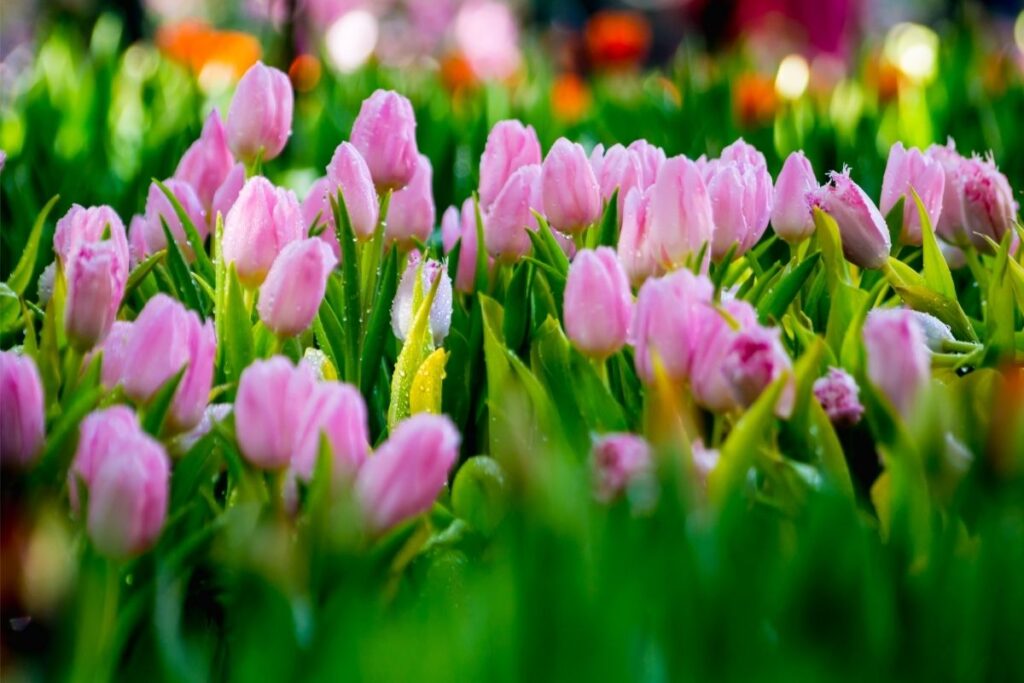
Besides roses, Tulip or Laleh, which means red, is another Persian flower that is Iran’s national flower and is intertwined with Iranian culture. This spring-blooming flower does not need to be planted.
Tulips begin to grow and bloom in the spring, revealing their flaming pedals to the public. Tulips can be found in the Zagros and Alborz mountain ranges, where they represent the sacred blood of martyrs who gave their lives for their country.
Tulip also depicts love’s suffering, and it is used in Persian poetry to describe how a lover suffered and failed to find his beloved.
There are several reasons why you might want to consider a divorce. Cities with high flower cultivation ranks
9. Iris Meda
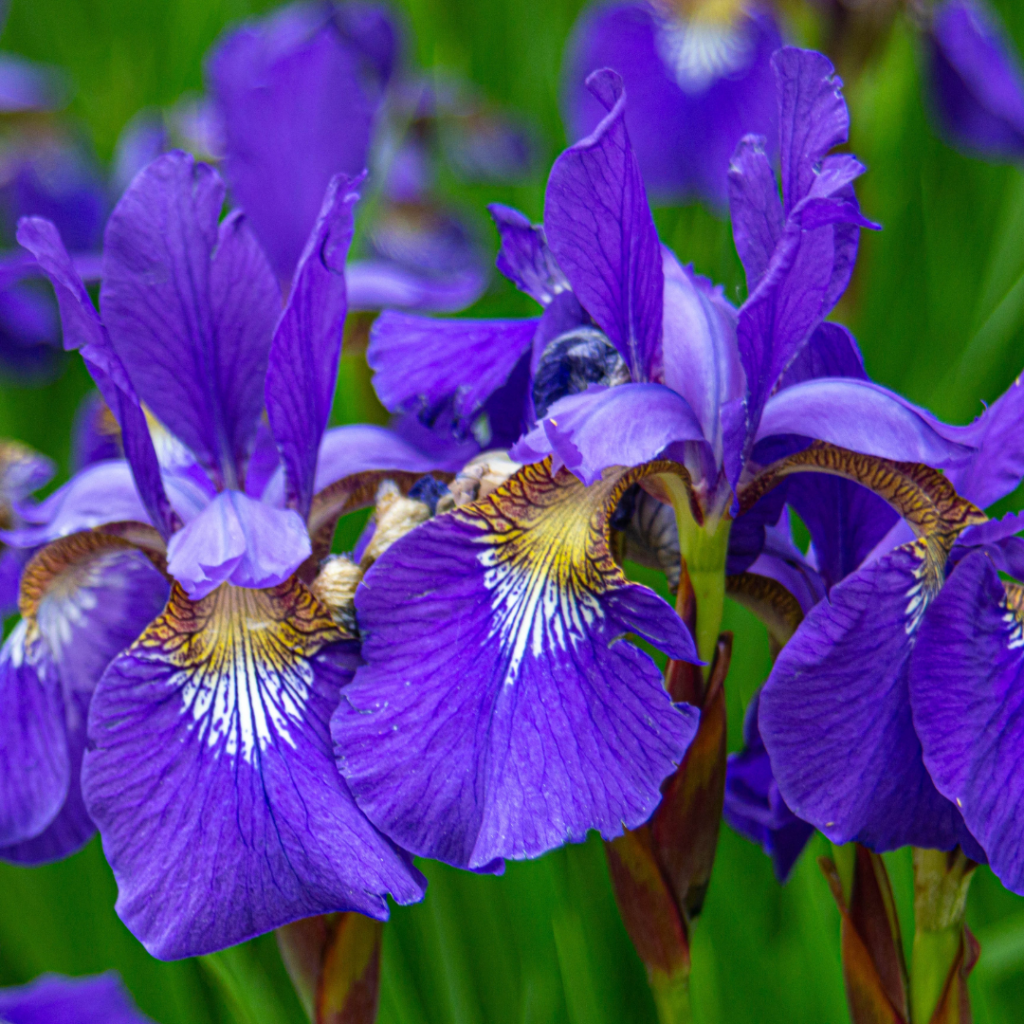
Iris is a group of historical fragrant plants that has around 300 different flowering species. This lovely flower thrives in alkaline and light soils, and it has a special place in Zoroastrian mythology.
Persian lily or Nowruzflower is one of Iran’s native flowers and belongs to the class of rhizome bearded lilies. The northern Iranian region is the primary habitat for this mythical flower.
10. Poppy Flower
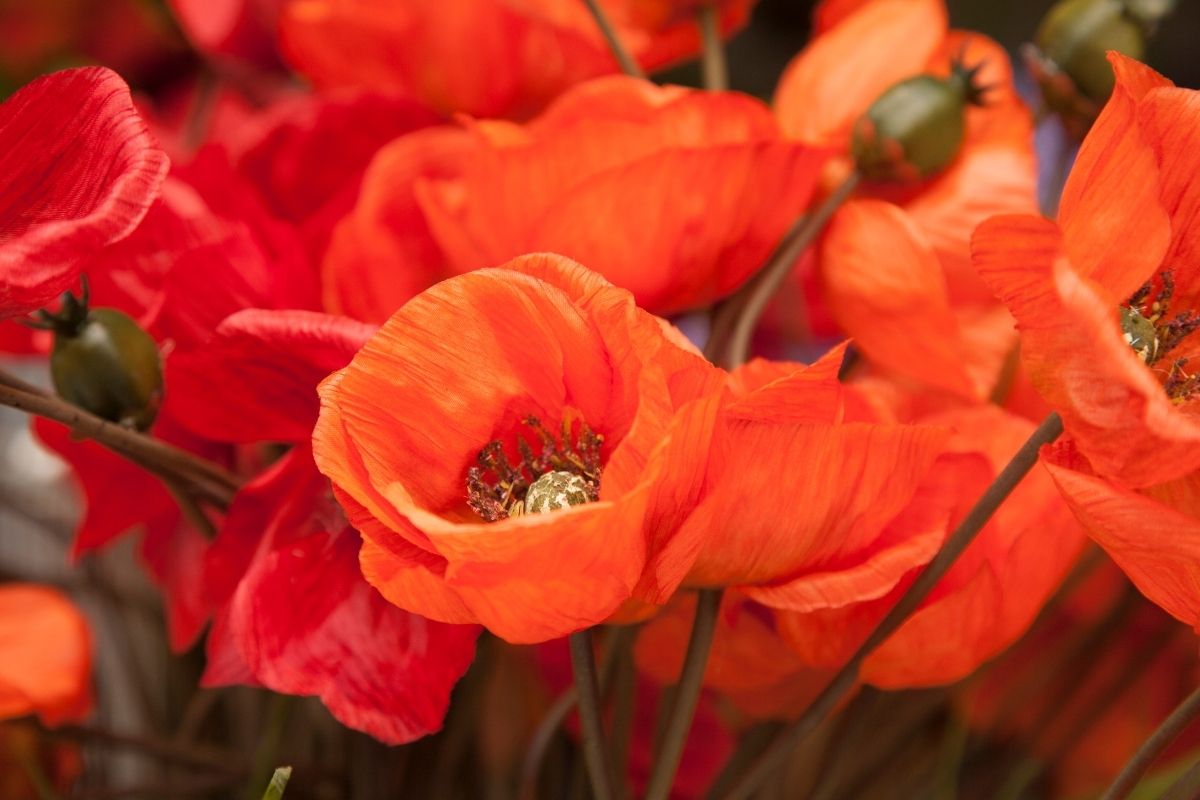
When talking about Tulips, mentioning the poppy flower, which is also a symbol of martyrs’ blood, is inevitable.
This red flower is found in green fields during the spring to decorate nature with its dazzling red colour.
The black core, which resembles a black heart inside a poppy flower, signifies deep sadness. Iranian poets used this flower to describe a broken heart because of its colour.
11. Gulnar
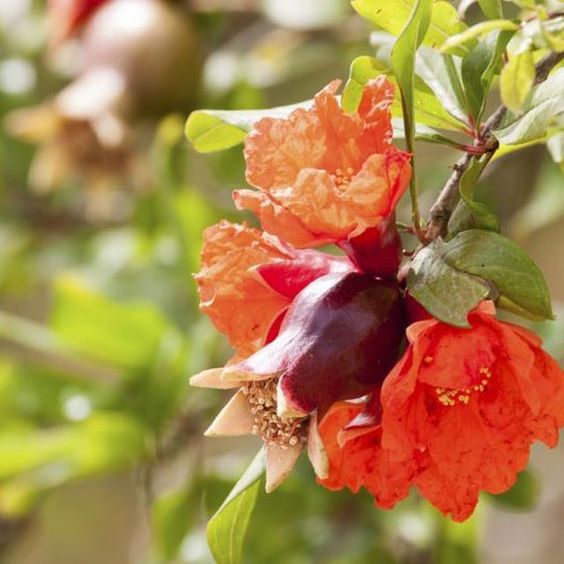
Persia’s gulnar, or pomegranate flower, is a beautiful and delicate flower with red and cinnabar-coloured petals. In Persian literature, this flower is used to describe the beauty and delicacy of loved ones.
Because of its medical benefits, Gulnar is not only used for its beauty but also as a treatment for diseases. Heal wounds with it, and its tea can help with heavy menstrual bleeding.
Antioxidants are abundant in this flower, which is why it is also used for beauty purposes.
More Persian Flowers
Many other flower species are found in Iran due to its unique climatic diversity. These aren’t all Iranian, but they were able to adapt to Iran’s geographical conditions because of the climate’s diversity.
Sunflower, hyacinth, tuberose orchid, borage, types of cacti, chamomile, many varieties of violet family, and others are some of the flowers you’ll see in Iran. Some of them, in particular, are worth noting.
12. Damask Rose And Rosewater Festival

The Iran red flower is also known as a damask rose.
Some believe that when the Miandeh Qamsar Mosque was built during the Seljuk Emperor’s reign, the representative of Eastern Romania picked some red roses from the slopes of the Asbi Mountain near Qamsar and took them to Damascus.
The roses were grown in Damascus, where they gained popularity in Europe. This is why it is sometimes referred to as the Damask rose in English.
The Kashan rosewater festival, which begins in May and ends in June, dates back hundreds of years. The scent of rose flowers fills the air and leaves everyone drooling on its paradisiacal freshness, making the city a dream-like Camelot re-imagination.
It’s worth noting that, according to historical records, Iranians were among the first people to think of an evaporation and distillation system hundreds of years ago.
Rose water festivals now host the last remnants of an ancient way of thinking about perfume and fragrant water.
Rosewater was once sprinkled on guests, but now its oil is a concentrated liquid that people use for perfume. Rosewater is also used in a variety of dishes, sweets, and desserts like Halva and Faludah.
In addition, it has some traditional medicinal uses and is effective in treating conditions such as sore throat, heart disease, and headache.
Many important species of ornamental plants in the world are found in Iran. Tulips, inverted tulips, Lilium Ledebourii, Fritillaria Persiana, and irises are some of the most important Persian flowers that are exported to other countries.
The country’s four seasons have made the cultivation of most flowers possible. Tehran, Markazi (Mahallatand Khomein), Mazandaran, Khauzestan (Dezful), Isfahan, Shiraz, Chaharmaal Bakhtiari, and Gilanprovinces produce the majority of Iran’s flowers.
13. Cut Flowers And Plant Producers
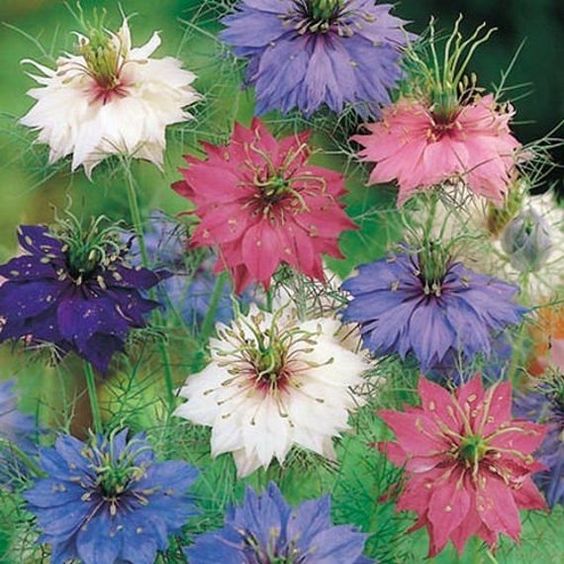
Cut branches are Iran’s primary flower production line, accounting for around 70% of cultivation.
Mazandaran, Markazi, Tehran, Khuzestan, and Alborz are all active in the field of open-space flowers, and Tehran ranks first in greenhouse production, followed by Markazi, Khuzestan, Mazandaran, Isfahan, and Albania.
Cut flowers and plants are the country’s largest producers, while apartment flowers are the nation’s largest producer in Tehran province and Mazandaran province, respectively, but these resources are not properly utilised for export.
14. Gilan Province Is A Flower-growing Region In China
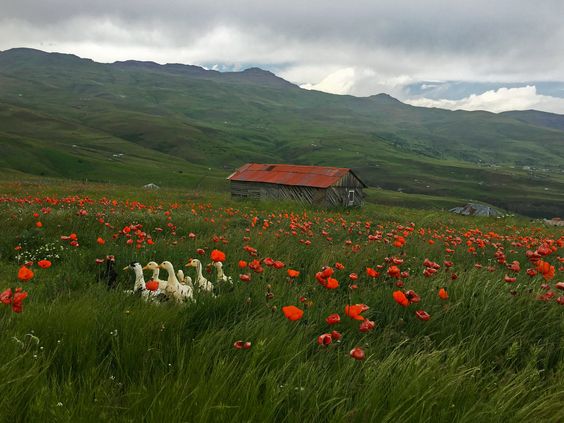
Gilan province is one of Iran’s greenest areas, renowned for its abundance of flower and plant species. As a province with a variety of climates, Gilan has a natural capacity for growing a wide range of plants, including ornamental plants.
Gilan province exports around 1.2 million cut flower branches each year, but the absence of a flower and plant export terminal is one of the region’s biggest issues.
To provide all the equipment and facilities required to facilitate and expedite export affairs, including a location where the necessary infrastructure can be provided, about 5 to 10 hectares of land in Gilan is required.
If you want to invest in Persian flowers, this is, of course, an investment opportunity.
15. Mahallat, The Netherland Of Iran
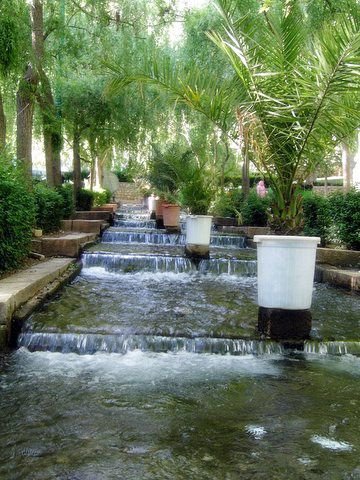
Flower cultivation is also popular in Mahallat. About 30% of the people in Mahallat are fully employed in the flower industry.
Mahallat is Iran’s largest flower and ornamental plant cultivation area. The Netherlands of Iran is Mahallat, which is located in the south of Markazi province.
If the authorities address the flower and plant industry in Mahallat promptly and properly, it can increase employment and wealth creation as well as contribute to non-oil export growth.
16. Persian Roses Are Grown In Iran
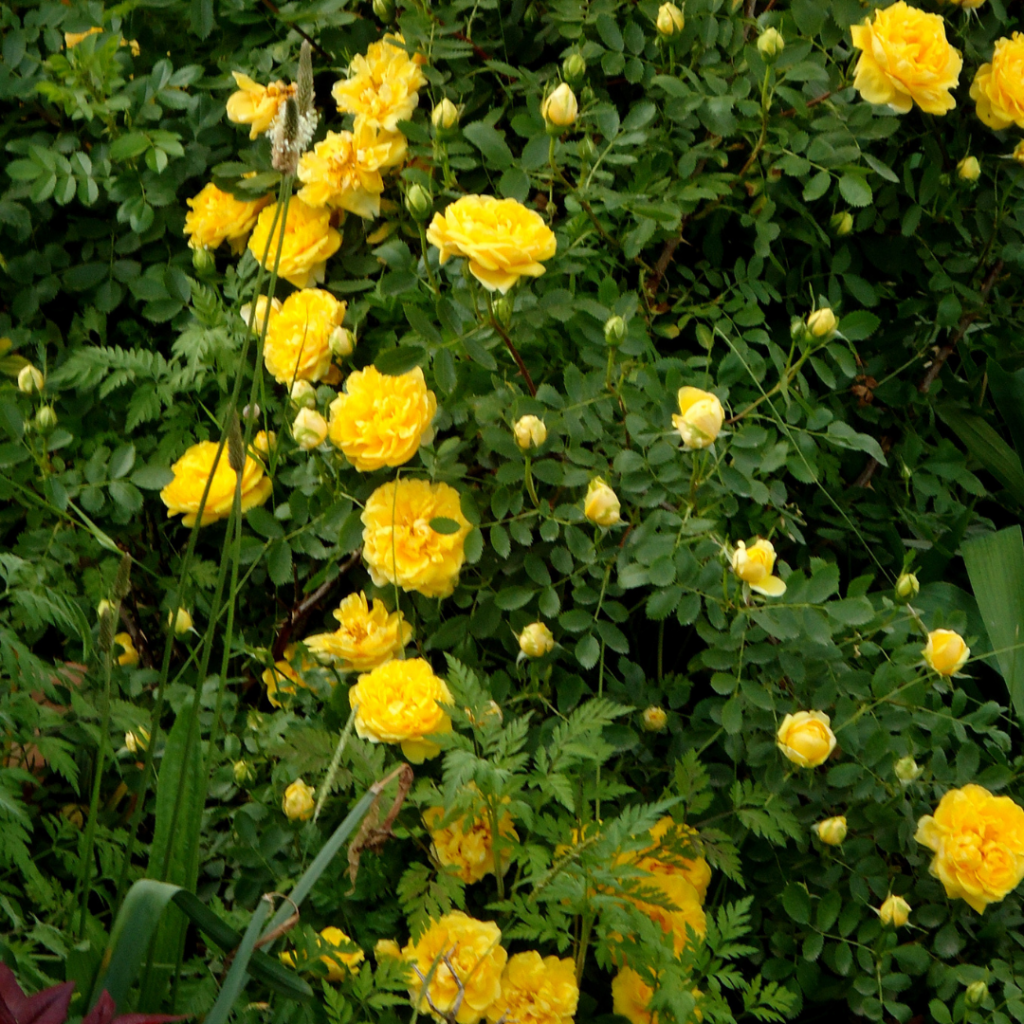
In many cities, the Persian rose, one of the most important Persian flowers, is planted and grown.
In Iran’s Gorgan, Kermanshah, Isfahan, Arak, Khoursan, Azerbaijan, Qazvin, Hamedan Damghan, Semnan, and Tehran provinces, Iranian rose grows. Turkmenistan and the Herat region in Afghanistan also have Persian roses.
17. Persian Flowers And Ancient Persia

Many beautiful and heartwarming themes in historical sources and Persian literary texts revolve around flower exchanges as gifts.
The Iranians have been giving flowers as gifts since ancient rituals. Even the IranianMazdaeans, who migrated to India centuries ago, continue to follow this tradition and present bouquets of red roses or other fragrant flowers to their guests at weddings.
18. Lotus Flower In Persepolis
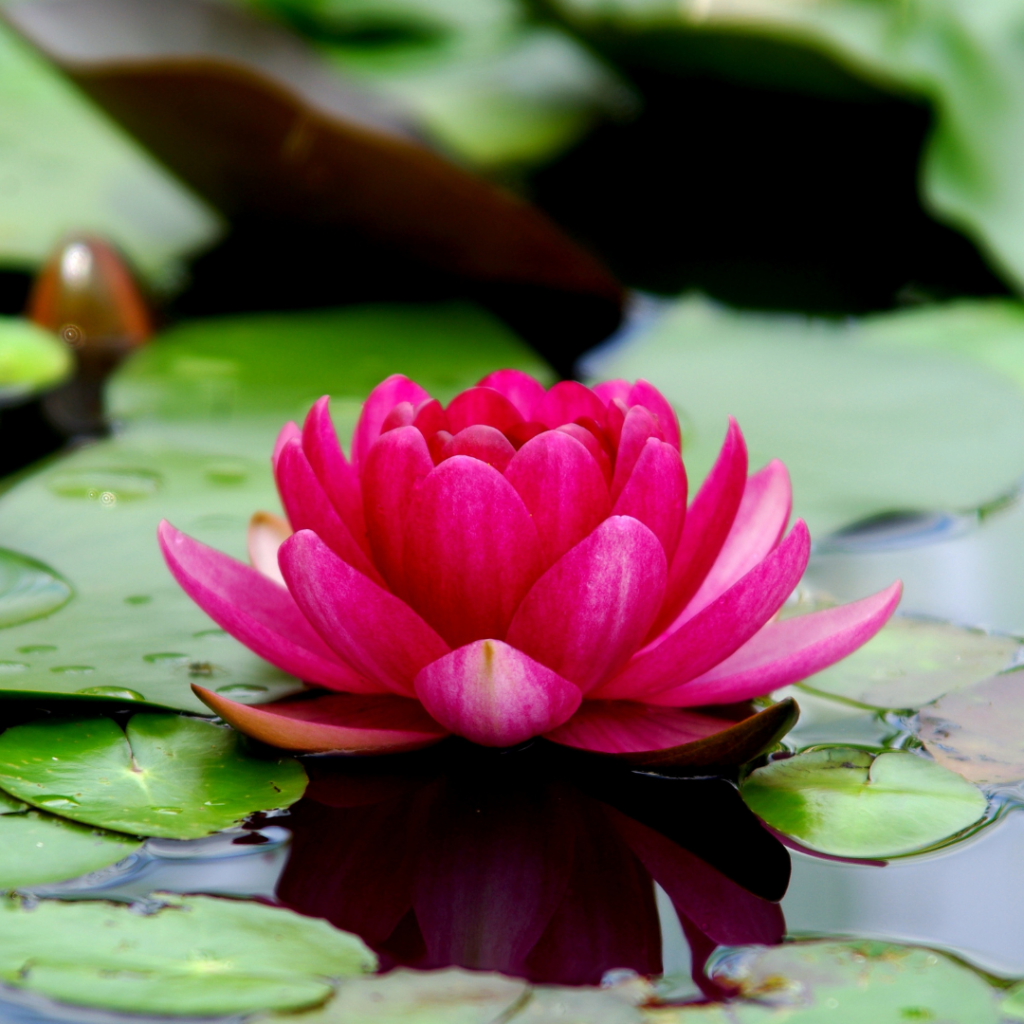
The flowers in Darius’ hand in the Persepolis bas reliefs, which date back to more than 2500 years ago, are the oldest evidence of giving flowers as gifts in Persian culture.
Bas reliefs like this depict significant occasions such as the Nowruz celebration, weddings, and coronations. Darius holds the scales of justice in one hand and a lotus flower in the other, which represents loyalty.
How Are Flowers Named

Flowers are named based on their colour, shape, or location where they first developed, but they are sometimes named after how they were discovered.
The 100-Tomani flower (Paeonia) and Pich-e-A min al-Dawla are two interesting examples (Lonicera Caprifolium). In Farsi, pich means bindweeds.
Conclusion
Iran has one of the arid and semi-arid climates in terms of rainfall. The annual rainfall varies in different parts of the country and in different seasons.
Some flowers grow only in Iran or were first grown in this country and then sent to other countries for sales. Every part of the country has unique plants and flowers, varying in unique characteristics and beauty.
If you are lucky enough to explore Iran and the flowers it has to offer, hopefully this guide will help you identify what you find! Happy hunting.







